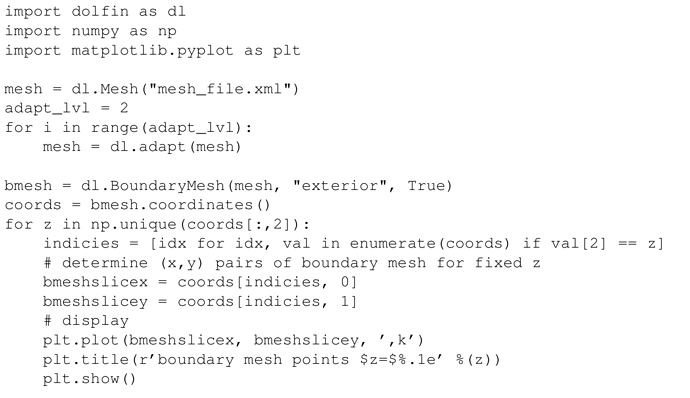I was provided with a 3d hexahedral (hex) mesh with two important characteristics
- All mesh points lie on the plane z = 1 or z = 0 (consequently all mesh points lie on the boundary).
- If I look at the (x,y) mesh points for a fixed value of z, they trace a complex geometry, as this comes from a geophysics application.
Getting the file to xml format:
The mesh was provided as a p4est connectivity file (.p8c). I was able to write this data to .vtk format and view the mesh in paraview. FEniCS has greater support for tetrahedral (tet) meshes so I first used the tetrahedralize filter in paraview to convert to the hex mesh to a tet mesh. I then saved this in exodus format (.e) and used meshio-convert to convert the .e file to .xml format.
Using the mesh in FEniCS:
I was able to import the mesh into FEniCS, but since the mesh points were all contained on the boundary I needed to refine the mesh to then have internal mesh points to solve a partial differential equation over. I used the refine and adapt functions in FEniCS. I then checked the (x,y) boundary point pairs for fixed z, and the set of boundary points was not consistent with what I expected. Points that I expected to not be boundary nodes were classified as boundary nodes.
Code
Questions (answer any that you can)
-
Have you worked with and or refined irregular meshes in FEniCS, that is meshes whose boundary cannot be described by a simple mathematical expression? If so how can you appropriately mark newly generated points as boundary points or not?
-
Have you converted hex meshes to tet meshes? What software package would you recommend?
